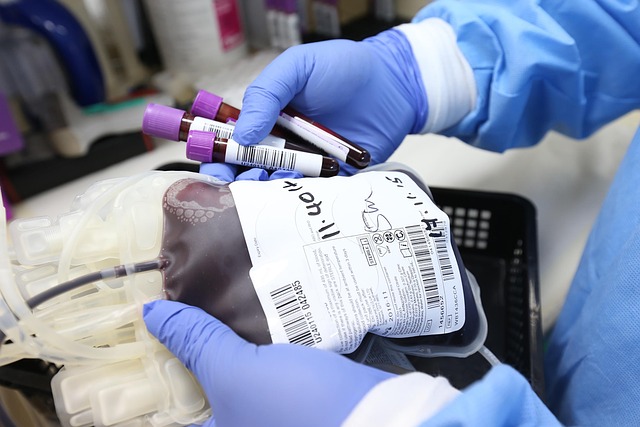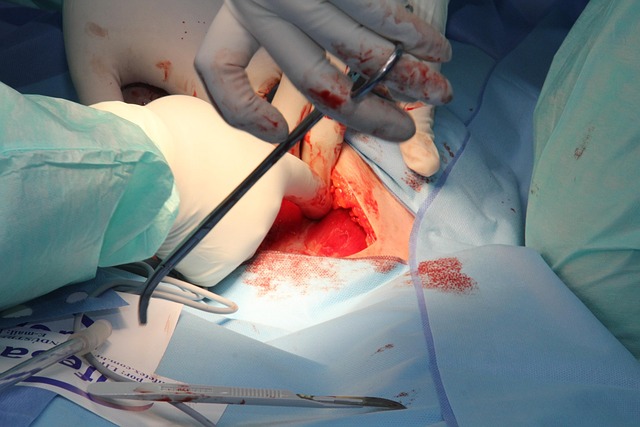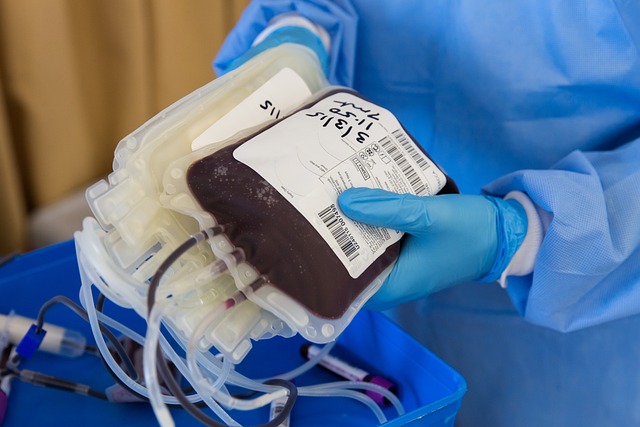Translation services for Surgical Procedure Instructions UK are crucial due to:
– Local guidelines & standards: The UK has unique medical terminology and practices distinct from global standards, affecting drug names, dosages, and procedures.
– Patient safety: Accurate translations prevent misinterpretations, enhance care adherence, and ensure patient safety during surgeries and recoveries.
– Cultural relevance: Professional translators convey complex medical terms accurately in multiple languages while considering UK cultural nuances.
– Quality assurance: Reputable services follow robust review processes involving qualified healthcare professionals for accuracy and consistency.
– Digital tools: AI-powered platforms streamline translations, offering quick and precise instructions accessible in various languages through cloud-based storage.
– Ethical considerations: Adherence to guidelines from bodies like HPC and MHRA ensures integrity, confidentiality, and compliance with local regulations.
In the realm of modern healthcare, ensuring clear and accurate surgical instructions is paramount. When translating these critical documents for use in the UK, understanding cultural nuances and regulatory landscapes becomes essential. This article delves into the challenges and best practices surrounding translation services for surgical procedures in the UK, addressing language barriers, regulatory compliance, and ethical considerations. From current challenges to digital solutions, we explore strategies to enhance patient safety and improve healthcare delivery through effective translation processes.
- Understanding Cultural and Regulatory Differences in the UK
- The Impact of Language Barriers on Surgical Instructions
- Current Challenges in Translating Medical Documentation
- Best Practices for Effective Surgical Procedure Translations
- Choosing the Right Translation Service for Healthcare
- Ensuring Accuracy and Consistency Across Languages
- Post-Translation Review: A Crucial Step for Quality Assurance
- Digital Solutions and Tools for Streamlined Translation Processes
- Ethical Considerations in Medical Translation Services
- Case Studies: Successful Translations in UK Healthcare Settings
Understanding Cultural and Regulatory Differences in the UK

When translating surgical procedure instructions for use in the UK, it’s crucial to understand the cultural and regulatory landscape. The UK has its own set of medical guidelines, standards, and terminology that differ from other countries. For instance, drug names, dosages, and even certain procedures may be regulated or referred to differently.
Translation services for surgical instructions must take these nuances into account to ensure accuracy and clarity. Professional translators with expertise in medical terminology and local regulations are essential. They can adapt the instructions to fit seamlessly within the UK healthcare system, making them easily understandable for healthcare professionals and patients alike. This adaptation process involves more than just language translation; it requires a deep understanding of the cultural and regulatory context to provide accurate and reliable information.
The Impact of Language Barriers on Surgical Instructions

Language barriers can significantly impact the effectiveness of surgical instructions, especially in a diverse healthcare system like the UK. When patients or caregivers cannot understand the procedures and aftercare outlined in the instructions, it may lead to misunderstandings and potential risks during surgery and recovery. This is particularly concerning for non-English speakers who might rely on family members or caregivers for translation, introducing the risk of critical information being misinterpreted or overlooked.
Translation services play a vital role in ensuring that surgical procedure instructions are accessible to all UK residents, regardless of their linguistic background. Professional translators with medical expertise can accurately convey complex medical terminology and procedures in multiple languages, guaranteeing that patients fully comprehend their care plans. This not only enhances patient safety but also promotes better adherence to post-operative guidelines, ultimately leading to improved health outcomes.
Current Challenges in Translating Medical Documentation

In today’s global healthcare landscape, ensuring clear and accurate communication is more critical than ever. When it comes to surgical procedures, the translation of medical documentation for use in the UK poses unique challenges. The primary hurdle lies in capturing nuanced clinical terminology accurately, as medical jargons vary across languages, potentially leading to miscommunication and errors in patient care.
Moreover, cultural differences play a significant role in how medical instructions are understood and followed. Translation services for surgical procedure instructions in the UK must consider these nuances to ensure that patients from diverse linguistic backgrounds can safely and effectively comprehend post-operative care guidelines. This requires not just linguistic proficiency but also an in-depth understanding of healthcare practices and patient expectations within the UK context.
Best Practices for Effective Surgical Procedure Translations

When translating surgical procedure instructions for use in the UK, it’s essential to adhere to best practices to ensure accuracy and clarity. The first step is to engage professional medical translators who are not only fluent in both English and the target language but also possess expertise in medical terminology. This guarantees that technical concepts are conveyed precisely, minimising potential risks associated with misinterpretation.
Additionally, localised cultural considerations play a vital role. Different countries have varying medical standards and practices, so adapting instructions to align with UK guidelines is crucial. Translation services for surgical procedure instructions in the UK should also incorporate review processes where qualified healthcare professionals check the translated documents for accuracy and consistency. This includes verifying that any references to specific medications, equipment, or procedures are appropriate for the local healthcare landscape.
Choosing the Right Translation Service for Healthcare

When translating surgical procedure instructions for use in the UK, it’s crucial to select a specialized translation service with extensive healthcare experience. This is not merely about converting words from one language to another; it involves ensuring precise and accurate communication of complex medical procedures. Look for providers who employ medical translators or linguists with deep knowledge of both the source and target languages, as well as familiarity with UK healthcare practices and terminology.
Reputable translation services will adhere to industry standards such as ISO 17105, which specifically addresses the translation of health-related texts. They should also offer post-translation review and editing by medical professionals to guarantee accuracy and clarity in the final document. With proper due diligence, you can choose a translation service that bridges cultural and linguistic gaps, making your surgical instructions accessible and understandable for healthcare providers and patients alike across the UK.
Ensuring Accuracy and Consistency Across Languages

Ensuring accuracy and consistency in translation is paramount when it comes to surgical procedure instructions, especially in a multicultural nation like the UK. The challenge lies in maintaining the integrity of medical information across various languages while adhering to local regulations and healthcare standards. Professional translation services play a vital role here, employing linguistically competent experts who understand both the source and target languages, as well as medical jargon.
These services go beyond mere word-for-word translations, ensuring that cultural nuances are respected and medical terms accurately conveyed. With a robust quality assurance process, they guarantee consistency in terminology usage, making the instructions accessible and clear to patients from diverse linguistic backgrounds. This is crucial for effective patient communication and ensuring UK residents receive precise surgical guidance tailored to their needs.
Post-Translation Review: A Crucial Step for Quality Assurance

After a surgical procedure is communicated in a foreign language, a post-translation review becomes an indispensable step in ensuring the accuracy and quality of the translated instructions. This process involves subjecting the translation to a meticulous scrutiny by experts who understand both the source and target languages as well as medical terminology.
The review checks for not just grammatical correctness but also ensures that the surgical instructions are clear, concise, and culturally appropriate for UK healthcare settings. It verifies that any technical terms are accurately translated and that the overall meaning of the document remains intact. This critical step is vital to guarantee patient safety, as incorrect or unclear translations could lead to misunderstandings and potentially hazardous outcomes during or after surgery.
Digital Solutions and Tools for Streamlined Translation Processes

In today’s digital era, healthcare professionals in the UK can leverage advanced tools to enhance surgical instruction translation processes significantly. Translation services for surgical procedure instructions play a crucial role in ensuring effective communication between medical experts and patients from diverse linguistic backgrounds. Digital solutions offer streamlined and efficient methods for translating these complex documents, allowing healthcare providers to deliver precise and accessible information. Online translation platforms with AI capabilities can process and translate instructions quickly, making them readily available in various languages.
These tools often incorporate machine learning algorithms that improve accuracy over time, reducing the reliance on manual translation. This is particularly beneficial for technical documentation like surgical guides where precision is paramount. Moreover, cloud-based storage systems enable easy access to translated materials, facilitating quick updates and revisions as medical procedures evolve. Such digital initiatives not only simplify translation tasks but also ensure consistent communication standards across different healthcare settings in the UK.
Ethical Considerations in Medical Translation Services

When translating surgical procedure instructions for use in the UK, ethical considerations come to the forefront. Medical translation services must ensure that all information is conveyed accurately and unambiguously to protect patient safety. This involves not only linguistic proficiency but also a deep understanding of medical terminology and cultural nuances specific to the UK healthcare system. Translators must adhere to ethical guidelines, such as those set by professional bodies like the Health Professional Council (HPC), which emphasize integrity, confidentiality, and respect for patient autonomy.
Furthermore, translation services should be mindful of regulatory requirements and standards in the UK, such as those set by the Medicines and Healthcare products Regulatory Agency (MHRA). Ensuring compliance with these regulations is vital to avoid legal complications and maintain public trust. Moreover, cultural sensitivity is paramount, as medical practices and preferences can vary between countries, requiring translators to adapt instructions to be relevant and accessible for British healthcare professionals and patients alike.
Case Studies: Successful Translations in UK Healthcare Settings

In the realm of UK healthcare, ensuring clear and precise communication is paramount, especially regarding surgical procedures. Case studies illustrate successful translations of surgical instructions that have significantly enhanced patient safety and care. These examples highlight the critical role of professional translation services tailored to medical contexts. By carefully adapting instructions for local usage, healthcare providers can avoid potential risks associated with inaccurate or culturally insensitive language.
Successful translations often involve more than just word-for-word substitutions. They require a deep understanding of medical terminology and cultural nuances specific to the UK. For instance, a study on translating post-operative care guidelines demonstrated that aligning instructions with local practices and preferences improved patient adherence and outcomes. This underscores the importance of tailored translation services for surgical procedures, ensuring that every step of the process is accessible and understandable for UK healthcare professionals and patients alike.
In light of the above discussions, it’s clear that effective translation of surgical instructions for UK use is paramount to ensure patient safety and informed consent. By understanding cultural nuances, overcoming language barriers, and adopting best practices in medical documentation translation, healthcare providers can improve communication and outcomes. Choosing reputable translation services, ensuring quality assurance through post-translation review, leveraging digital tools, and addressing ethical considerations are key strategies to optimize the process. As we navigate the complexities of global healthcare, seamless translation services for surgical procedures in the UK remain a game-changer in patient care.
